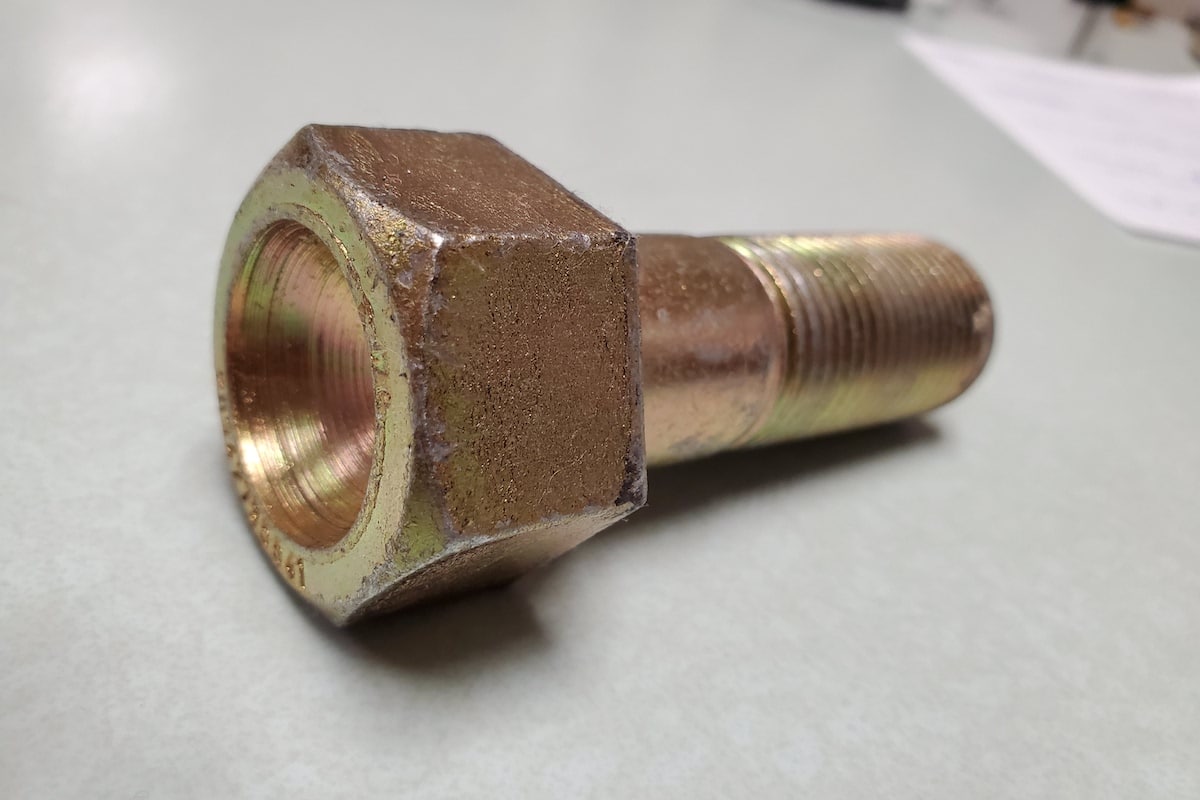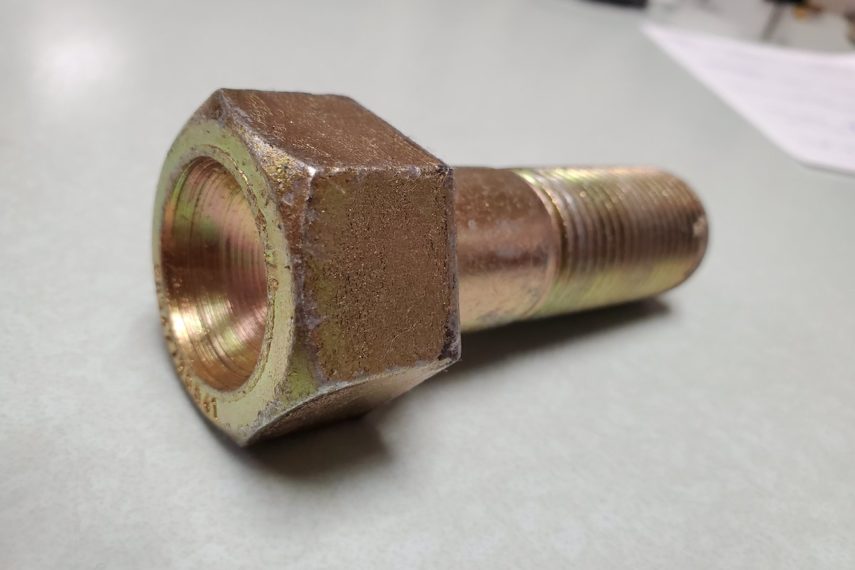In order to ensure optimal performance, many fasteners must undergo rigorous testing prior to implementation. Torque-tension testing is probably the most common of these tests, but we’ve already walked through the basics of that in this previous article.
In this article, we’ll cover a test that’s less common, but just as important to know about when you’re dealing with fasteners: coefficient of friction testing. We’ll discuss:
- What coefficient of friction is
- The basics of coefficient of friction testing for fasteners
- What factors affect coefficient of friction for fasteners
- Examples of coefficient of friction specifications
What Is Coefficient of Friction?
Let’s start with a definition. Coefficient of friction (CoF) is the ratio between frictional force and normal force. That is, the ratio between the force needed to move one surface across another and the normal force, or pressure, that holds the surfaces together.
Typically, a coefficient of friction value will be between 0 and 1. Coefficients closer to 0 indicate objects that move more easily over one another. Coefficients closer to 1 indicate objects that aren’t as easily moved over one another. In fact, a coefficient equal to 1 would mean that it takes the same amount of force to pick up the object as it does to move it across another surface.
How to Determine Friction Coefficient for Fasteners: Coefficient of Friction Testing
Now let’s talk about how you may determine that value: coefficient of friction testing. We’ll discuss some of the background information on it, how it’s accomplished, and why it’s important in the grand scheme of things.
What Is Coefficient of Friction Testing?
Coefficient of friction testing is a fastener testing method that measures the static and kinetic friction, or resistance, of a bolted joint’s surfaces as it’s being tightened.
- Static friction: the force necessary to initiate motion between two surfaces
- Kinetic friction: the resistance to sliding once one or two surfaces are in motion
This test is sometimes called out in big specifications (like ISO 16047), along with regular torque-tension tests, bearing surface tests, and so on. It’s intended to measure how much torque is needed to tighten a fastener to a specified tension. In other words, the amount of friction at play is one of the main factors in that big torque-tension test, so it’s important to know the coefficient of friction of every material, lubricant, and coating going in.
A coefficient of friction test is normally completed with a Skidmore-Wilhelm machine in a lab. This is just one brand of testing machine out there, but it’s a well-known market leader. You can learn more about these machines and how they work on the Skidmore-Wilhelm website.
Why Is Coefficient of Friction Testing Important?
The entire point of these fastener tests is to help OEMs determine the correct setting for their torque wrenches when they install fasteners. They know how tight they need the joint to be, so they need to figure out how much torque they need to get to that desired tension.
Too little torque and the fastener won’t be able to do its job properly. Too much torque and the fastener will be put under too much stress, causing threads to strip or the entire fastener to break. Knowing the optimal friction value is critical in determining the relationship between torque and tension in any bolted joint.
It’s also necessary to determine the coefficient of friction for a particular material, lubricant, or coating, or to verify an already known coefficient of friction value for any of those things. Some manufacturers are also required to run these tests periodically to ensure their known coefficient of friction value is still valid.
So if you were to change a fastener’s material, lubricant, or coating, one way to compare alternative solutions is from a friction standpoint. You can look at the coefficient of friction value for a possible new coating and immediately know what effect it’ll have on your tightening values.
Need help deciphering some of these fastener terms? Check out our Guide to Fastener Terminology.
What Factors Can Affect Coefficient of Friction for Fasteners?
As you can likely assume, there are many different factors that can affect a fastener’s coefficient of friction. Some of the most common ones are:
- Material and grade — The type of material used, and how hard it is, affects friction.
- Class of fit for mating threads — Thread systems with a tight fit have more friction than those with a loose fit.
- Fine vs. coarse threads — Fine threads have more friction than coarse threads.
- Bearing surface area and properties — The amount of surface area, and how rough it is, affects friction.
- Coatings and lubricants — Different fastener coatings and lubricants affect friction in different ways.
Examples of Coefficient of Friction Specifications
Now, some examples. At Wilson-Garner, we sell test products that various manufacturers use in their coefficient of friction testing. Most of the test products we supply are for nut manufacturers and coating makers. The nut manufacturers get test bolts from us to test the coefficient of friction values of their own hardware. The coating makers get plain bolts, nuts, and washers from us, then coat and test them.
Interested in checking out a few OEM specifications for test products used in coefficient of friction testing? Check out this page on our site with specs from General Motors.
RELATED: Need a specialty bolt, screw, or stud? Wilson-Garner can help.
Get Coefficient of Friction Test Products from Wilson-Garner
If you’re looking for test products to run your coefficient of friction tests with, talk to our team at Wilson-Garner. We have years of experience working with OEMs, fastener manufacturers, and coating manufacturers to deliver the high-quality test parts they need to complete mandated and standardized testing procedures with accuracy. Contact us to learn more about our products, or request a quote today.

